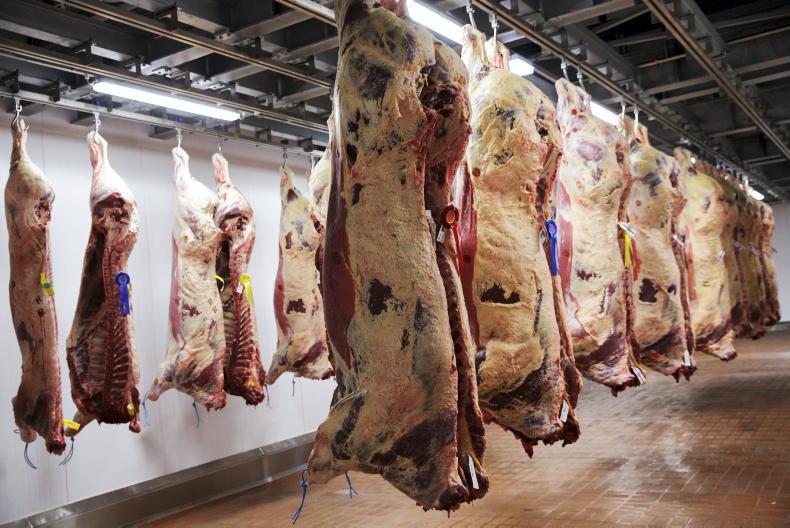Factories continue to use higher than anticipated numbers of cattle coming fit for slaughter as a tool to put pressure on the trade.
Some factories have tried to pull quotes back further this week with varying degrees of success.
Bullocks are being quoted at €5.05/kg to €5.10/kg base price, with the higher end of quotes a little harder to come by this week.
Heifers are generally trading at €5.10/kg to €5.15/kg. Aberdeen Angus and Hereford cattle are still attracting bonuses of between 15c and 25c/kg and a little more once animals are meeting the required specification.
Some industry insiders expect the big numbers to keep coming for another four to five weeks.
The current higher numbers is likely an overhang of animals that should have been finished pre-Christmas, but, with a poor back end, they were lighter than they should have been coming into the shed.
Numbers are expected to get tighter by the beginning of April, but that’s little solace for a winter finisher with expensive stores and a tonne of meal gone into finishing cattle.
Bull trade
The young bull trade remains pretty steady, with €5.30/kg on the table for U grading young bulls in some of the factories specialising in bulls.
R grading bulls are moving at €5.10/kg to €5.20/kg, while O and P grading bulls are being paid out at 10c to 20c/kg less.
Under-16-month bulls are generally working off €5.10/kg to €5.15/kg base price, with the 12c/kg in-spec bonus being added in along with grading for the final price.
As is always the case when numbers are high, factories are back talking about weights again, with some implementing a 420kg weight limit after which cuts are applied.
Cull cows
Cull cows also remain a very solid trade, despite the increased number of cows coming on the market.
U grading suckler cows are still top of the market, with €4.70/kg to €4.80/kg being paid for good-quality young well-fleshed cows this week.
R grading cows are working off €4.30/kg to €4.50/kg, with O grading suckler cows coming in at €4.20/kg, while P grading are working off €3.90/kg to €4.00/kg, depending on weight and flesh cover.
Last week’s kill came in at 37,585, a slight increase on the last week’s full kill at the end of January. Comparing the kill with the same week in 2023, numbers are up almost 2,00o head, with the majority of this increase coming from cows.
The cow kill is already up 7,616 head on the first seven weeks of 2024 and it’s these cows which are applying pressure to the trade.
Ironically, it’s not the cow trade that is under pressure, but rather the more expensive cattle for the factories to buy - bullocks and heifers.
Commenting on the trade, Irish Farmers’ Association national livestock chair Declan Hanrahan said: “The UK beef price continues to increase week on week and is now 60c/kg above our price, while, across the EU, prices continue in a steady upward trajectory.
“Factories trying to dampen expectation on beef prices show no regard for beef farmers who have made substantial investments in finishing cattle over the winter period and is unacceptable.”
Across the water, R3 bullocks have increased in price again this week up to £4.97/kg (€6.10/kg incl VAT), with numbers of finished cattle remaining tight.
NI comment
NI factories have cut quotes by 4p/kg this week to 460p/kg (€5.63/kg inc VAT) for U-3 grading animals.
Deals on steers and heifers have eased by a similar level, with 476p to 482p/kg (€5.83 to €5.90/kg) buying the main run of in-spec animals, although bulls are closer to 465p/kg (€5.70/kg). Cows have eased slightly but deals of 360p to 380p/kg (€4.41 to €4.66/kg) are available.






 This is a subscriber-only article
This is a subscriber-only article










SHARING OPTIONS: